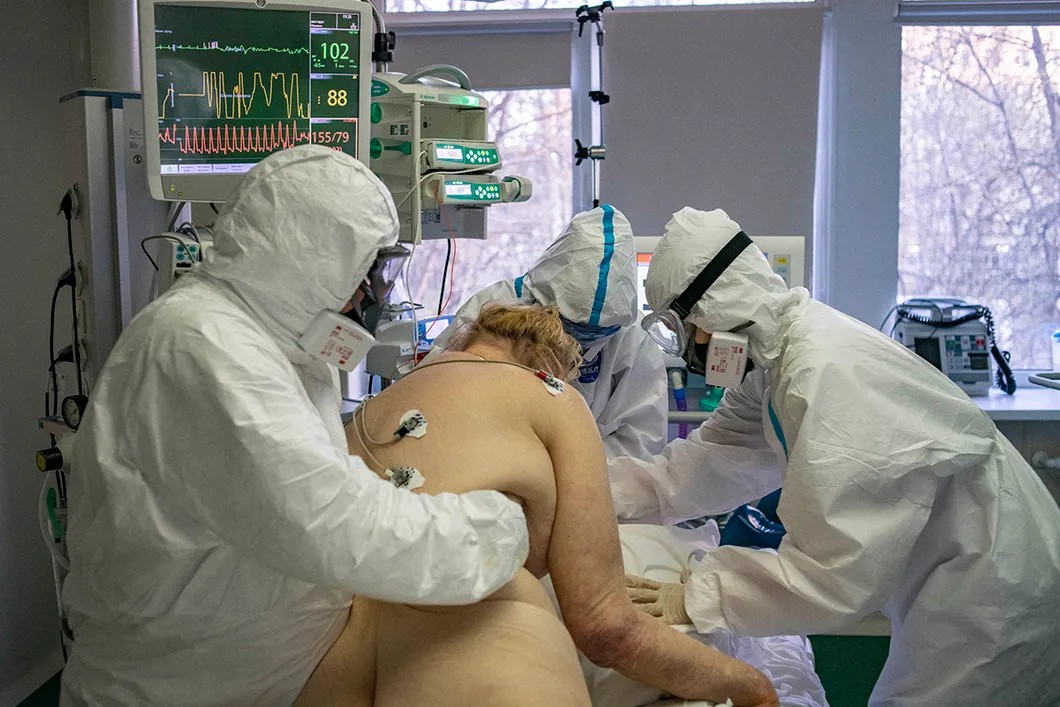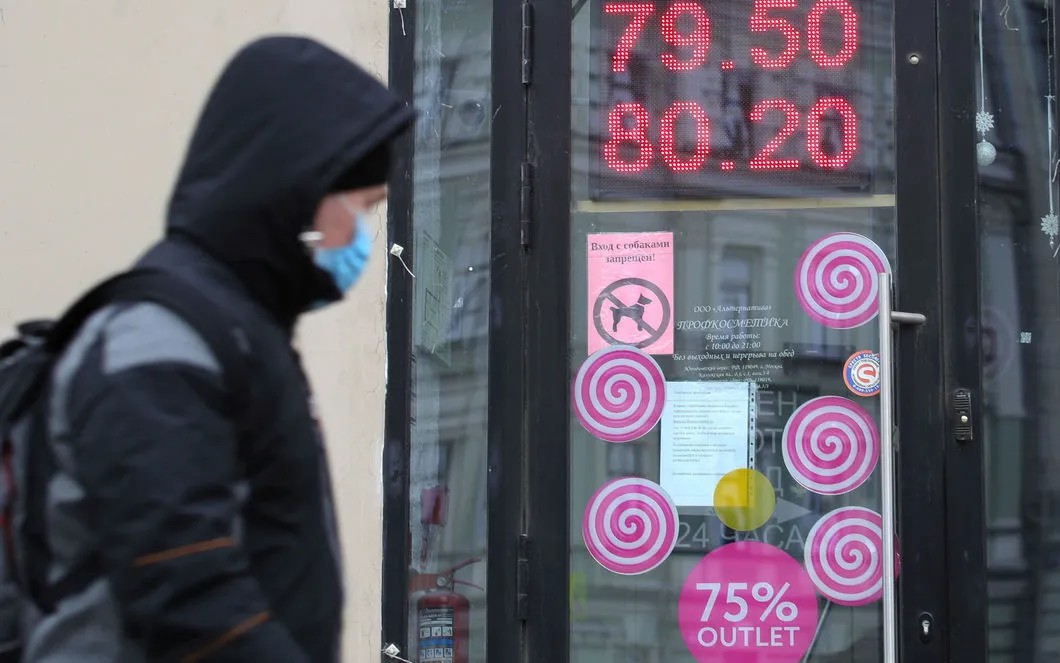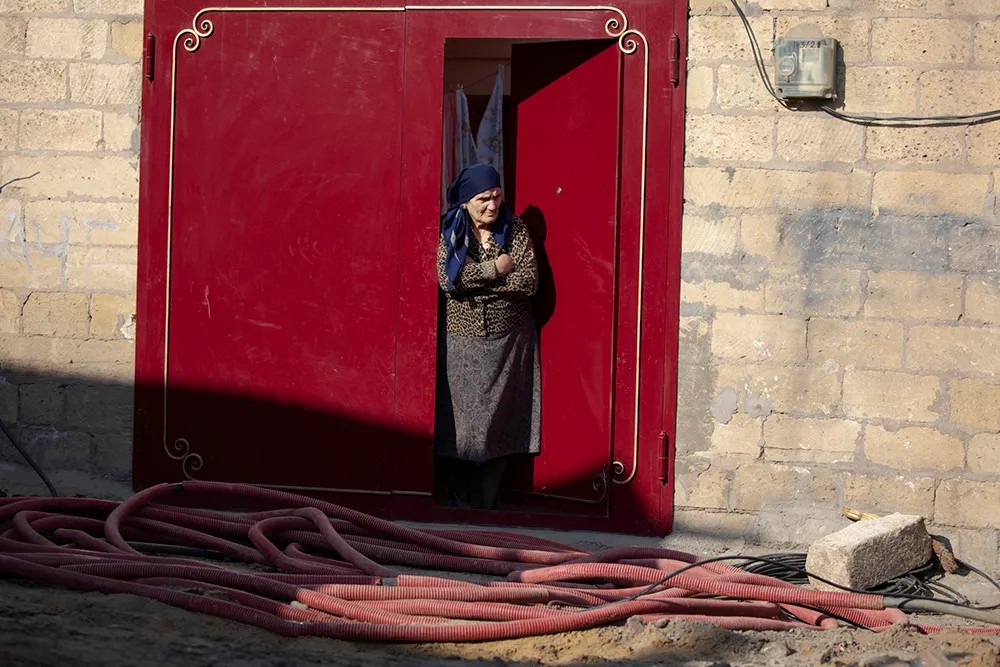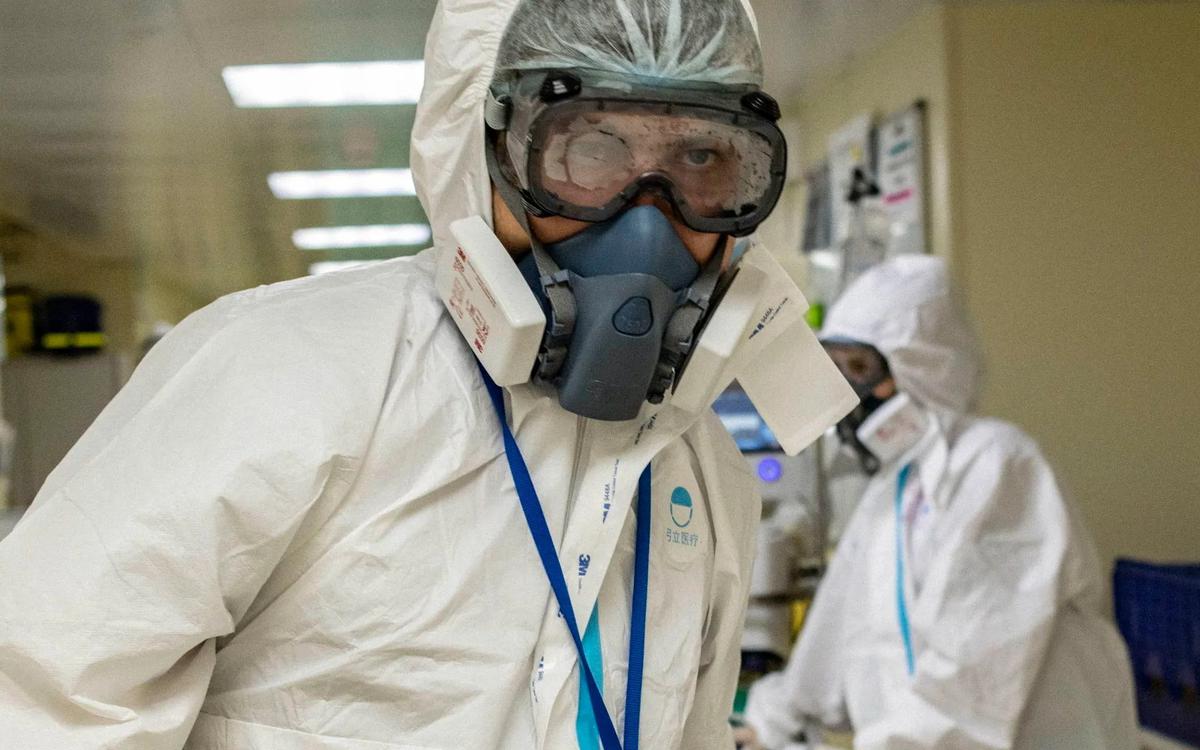This Week’s Highlights
This week, we take a look at the nationwide disastrous consequences of COVID-19 for incomes of regular Russians; share the tale of two Russian regions with two drastically different anti-pandemic approaches, but with far-reaching lessons; our correspondents take you inside a ‘war zone’ of one of Moscow’s COVID-19 hospitals and we try to figure out what a second pandemic wave in Russia could look like.
Want to get the full story? Click the links below for full-length articles in Russian.
Inside Russia’s COVID-19 Hospital
On February 29, Moscow City Clinical Hospital 52 became one of the first hospitals in Russia to start admitting patients with COVID-19. Now, it treats hundreds of them. Our most-read story this week is a collaboration between our award-winning reporter Elena Kostyuchenko and photographer Yuri Kozyrev, who spent more than 24 hours documenting the work in this COVID-19 ‘war zone’.
A nurse turned patient.Lena Petrova is an ICU nurse. But for the past month, the 44-year-old has been a patient in her own unit. She was one of eight medics to contract COVID-19 but her road to recovery has been the hardest. She has a bruise on the corner of her mouth from where the oxygen tube was placed and an incision from the tracheostomy hidden under a patch on her neck.
“I was afraid to open my eyes. To wake up and see that I have a tube in my hip, extracorporeal life support.”
“We’ll all end up there.” Russia is yet to hit its COVID-19 peak but its underfunded health care system is already struggling. According to reports, two dozen hospitals have been placed under quarantine due to outbreaks. There are no official figures but it’s estimated that hundreds of medics have already become infected with COVID-19. At Moscow City Clinical Hospital 52, so far 24 workers have fallen ill. Outside the hospital, a 200-bed building is being constructed to house recovering patients. “They’re building it for us,” the doctors joke. “We’ll all end up there.”
Families feel the distance. Long hours and a high infection rate mean many medics are unable to see their families. Thirty-one year old Zinaida Yurievna is among them. She moved into a hotel specially organized for doctors at the end of February and hasn’t seen her one and half year old son for two months. “When I’ll see him, we’ll get to love each other again,” she said.

Backstory.On Monday, Russia recorded more than 10,000 new cases for the second day in a row, the second-highest number of new infections after the US. The official number of cases now stands at more than 145,000, which makes it the seventh-largest COVID-19 outbreak in the world. But even Russian officials are conceding that the actual number is much higher than government figures show, a warningthat independent experts have been sounding for months now. On Saturday, Moscow Mayor Sergei Sobyanin said screening results suggested that 2% of the city’s 12 million residents could be infected, meaning that Moscow alone would account for some 240,000 cases.
Read the full report from the Moscow City Clinical Hospitalhere.
Russia’s Plunging Incomes, Explained
As the country endures its second month under lockdown, Russians are being plunged further into poverty. The government reports just a 0.2% fall in the population's income during the year’s first quarter. But analysts expect the figures for the second quarter to show a much bigger drop of at least 17.5% and an annual fall of 5% for 2020.
Smaller businesses will be hit hardest. But the official figures won’t paint the full picture of the COVID-19 induced financial hardship in Russia. “One must understand that these wages are, in fact, only official, legal wages,” explains Marcel Salikhov, a professor at Moscow State Institute of Electronics and Mathematics. It will primarily be the small and medium-sized businesses that will feel the impact of the quarantine, which is where informal labor contracts are most common.
Wages down, prices up. While wages are falling around the country, prices for basic things like food are going up. Government-sourced figures show that the consumer price index for food went up by 2% in the first quarter, and non-food products, by 2.5%. Alexander Suslin, head of the Economic Expert Group’s fiscal policy department said this partly due to the growing exchange rate: “clearly not all goods are imported, but the depreciation of the ruble against the backdrop of falling oil prices has contributed to this situation.”

Further economic turmoil.Unlike other European countries, which are seeing case numbers plateau or fall, Russia’s numbers are just starting to spike. President Vladimir Putin has extended the country’s lockdown until May 11 to curb the spread of infection. But with growing infection rates, Russia may be forced to prolong its quarantine. That could take a further toll on the country’s economy and lead tomore job losses that already are counted in millions. Moreover, the pandemic’s damaging effect on local businesses — especially small and medium ones — will have a long lasting effect even after the virus is tamed.
Backstory. Some 21 million Russians are living below the poverty line, with the state-defined minimum wage equating to 10,800 roubles (about $165) a month. Income inequality has been growing in Russia for years. Wages fell for four years straight, from 2014 to 2017, only seeing a minor rise in 2018 after a change in their calculation methodology. After the pandemic, Russian citizens will be about 10% poorer than they were in 2013.
Read the full report on the pandemic’s impact on the income of Russians here.
Key Lesson of Mass Testing in Provincial Russia, Explained
This week our award-winning investigative reporter Elena Milashina features two drastically different COVID-19 approaches by two Russian regions with far-reaching lessons.
The first approach is from a Southern Russian region of Dagestan.On April 28, the head of a small village Tebekmakhi appealed for help in a video message addressed to the regional government. Half of the village’s 2150 residents were suffering from colds and viral diseases and 12 died throughout the months of March and April alone. The village usually sees 15-17 deaths per year. However, not a single villager had been tested for coronavirus at that point.
No tests, high death rates.Tebekmakhi is a microcosm of the whole Dagestan that has the fifth-highest rate of coronavirus cases in Russia and does 34 daily tests per 100,000 people. Yet the region (population of 2.9 million) has more folks sick with pneumonia than infected by COVID-19. Because few survive before even getting tested.

The second approach is from the far-east region of Sakhalin.The region has only 24 confirmed cases. Its population of 488,000 is comparable to regions in Southern Russia, although the density is much lower. Sakhalin is also the national leader in testing per head — 116 daily tests per 100,000 people. Russian regions located in the Far East were among the first recipients of coronavirus test systems in Russia back in February because they share borders with China and Japan.
Testing vs silencing.Sakhalin uses ‘the South Korean’ model where high testing is prioritized over strict quarantine, that doesn’t make much sense with low population density anyway. While Southern Russia practices ‘the Chinese model’ with draconian self-isolation measures. Take the neighboring with Dagestan Chechnya, where the repressive lockdown measures (outed in a recent Milashina’s expose, that got Novaya Gazeta in trouble) force people to die at home untested.
Backstory. Over the past week, Russia has ramped up its COVID-19 testing, boosting it by 1.1 million — the second place globally, only behind the US. But the examples of Sakhalin and Dagestan testify to the fact that there are dramatic distortions when it comes to regional testing. It erodes any attempt at an effective nationwide containment strategy. Until testing is increased in the most problematic regions of the country, which are at risk precisely because of population density, there can’t be any talk of control over the epidemic.
Read Elena Milashina’s full story on how regions with low-density populations have embraced mass testing here.
Other Top-Stories Russia Has Been Reading
- Subsequent pandemic waves will demand more long-term economic stimulus.Many countries are starting to draw up plans to lift lockdowns but the easing of quarantine measures will inevitably lead to a second wave of the pandemic and, consequently, the need for more state support, economist Ivan Lyubimov writes in one of our most popular opinion pieces this week . “New self-isolation restrictions will likely be reintroduced,” Lyubimov states.” This means that state support for economies - including in Russia - may be needed for a long time.” But unfortunately countries that previously ignored policies aimed at equalizing revenues will today struggle to deliver assistance to where it's most needed. Although Russia’s unemployment benefits have slightly risen, government stimulus needs to reach more small and medium businesses. But in Russia, there is still a big risk that significant portions of state support will just end up in the pockets of a few ultra rich, who will ship it abroad. Furthermore, when an economy produces little and imports a lot, government spending is largely used to pay for imports, which means the state is not only supporting itself but also other economies. Given that the COVID-19 is likely to stay around for a while, Lyubimov hopes that the Russian authorities will learn from the economic problems that they have already encountered, ASAP.
Thanks for reading! To keep up with Novaya Gazeta’s reporting throughout the week, you can follow us on Facebook, Twitter, Instagram, and Telegram. Our video content is available on Youtube and don’t forget to visit our website for the latest stories in Russian.
— The Novaya Gazeta Team
